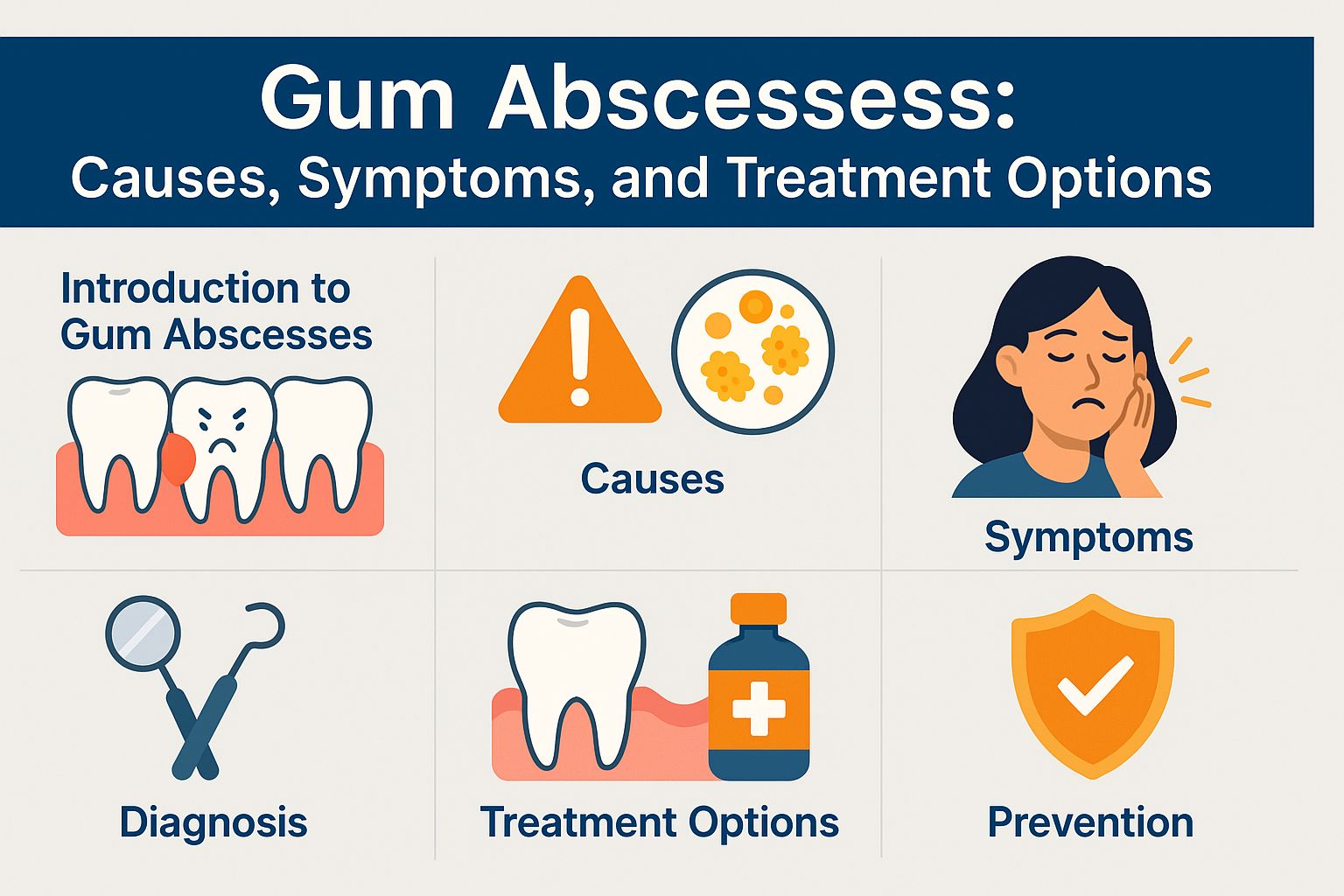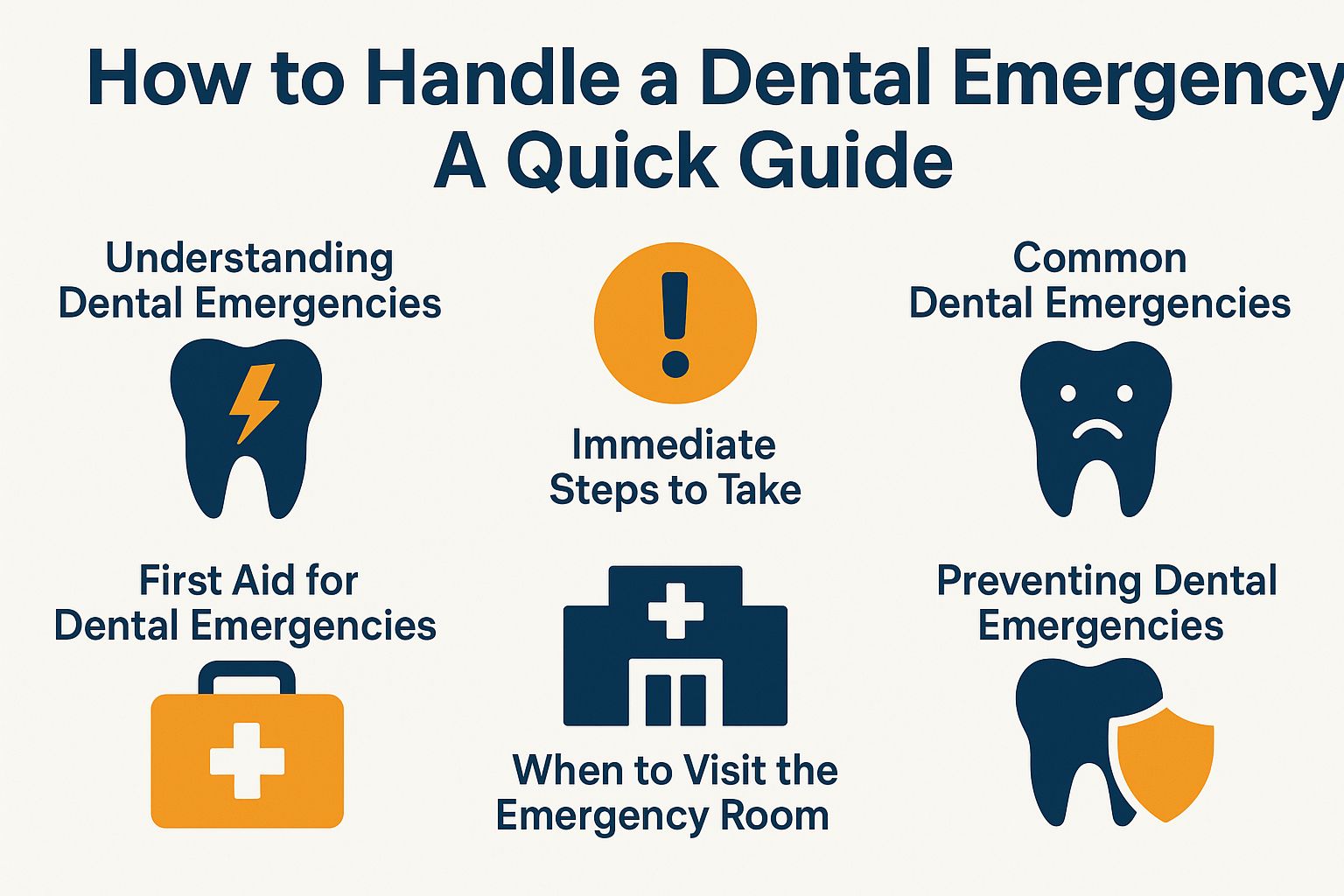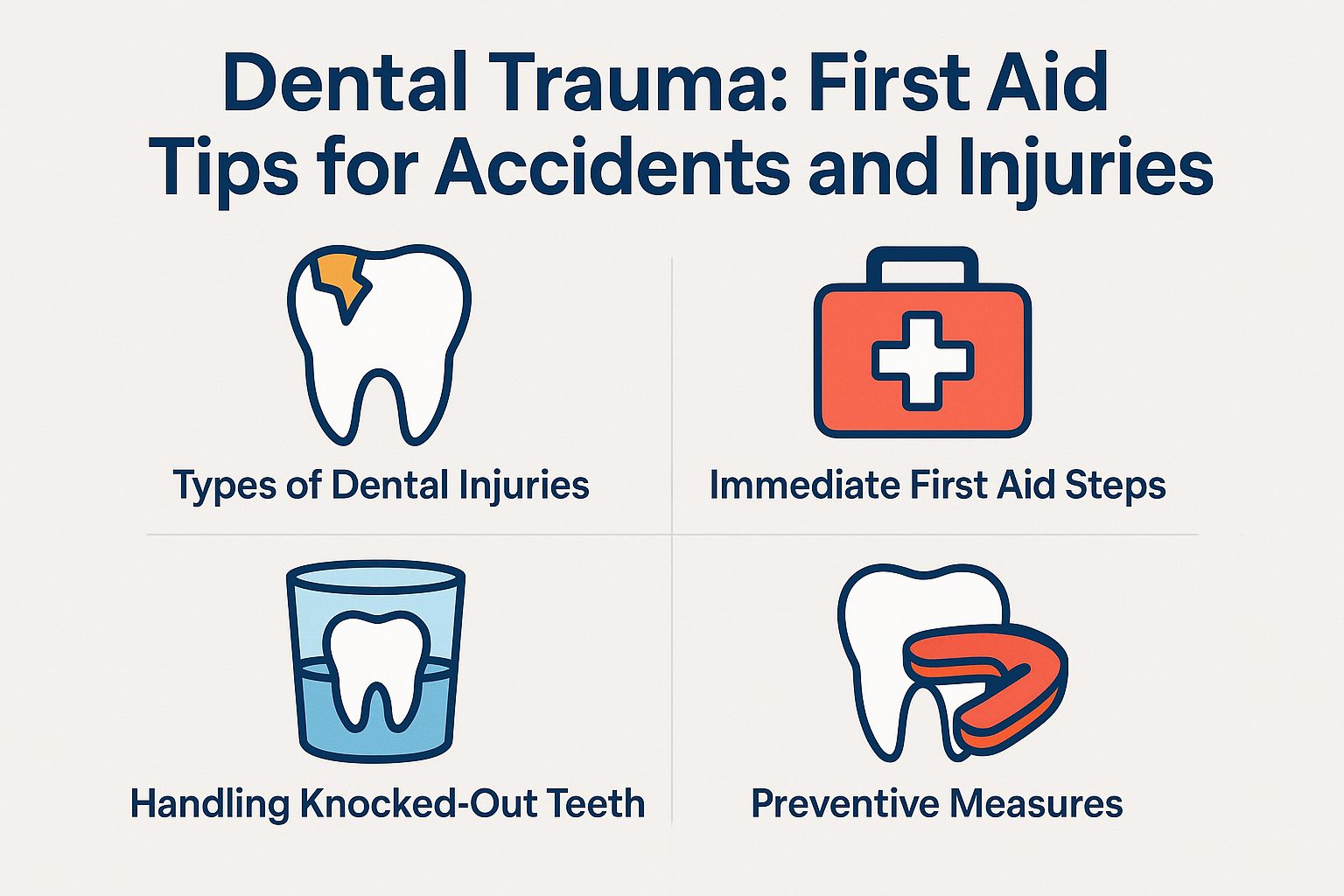Gum Abscesses: Causes, Symptoms, and Treatment Options
Experiencing a dental abscess causes intense toothache, swelling, and redness inside the mouth. If you notice sensitivity to hot or cold, consult a dentist promptly. Knowing the causes, symptoms, and treatment options for gum abscesses is vital for your oral health. This article covers essential information to help you manage this painful condition effectively.
Causes of Gum Abscesses
Gum abscesses can develop from various factors. Inadequate oral hygiene is a primary cause, accounting for about 60% of cases.
Other contributing factors include dental injuries and systemic health issues.

Poor Oral Hygiene
Poor oral hygiene, like neglecting to brush daily and skipping dental check-ups, can lead to gum abscesses.
To prevent complications, maintain a consistent oral hygiene routine. Individuals should brush twice daily with fluoride toothpaste for at least two minutes each time.
Daily flossing is crucial for removing food particles and plaque between teeth. Schedule dental check-ups every six months for cleanings and early detection of issues.
Using antibacterial mouthwash can enhance oral hygiene by reaching areas brushing and flossing may miss. These practices help maintain healthy gums and teeth.
Dental Trauma
Dental trauma from accidents or aggressive chewing can introduce bacteria into gum tissue, leading to abscesses. To mitigate the risk of dental trauma, it is advisable to take specific preventive measures.
Preventive Measures
- Utilize a mouthguard during contact sports; these protective devices can significantly reduce the impact on teeth.
- Refrain from consuming hard foods such as ice, nuts, and hard candies that pose a risk of chips or fractures.
- Schedule regular dental check-ups to identify potential issues before they escalate.
- Consider the use of a night guard if you engage in teeth grinding, as this will help protect against wear and tear, thereby providing a comprehensive approach to maintaining dental health.
Underlying Health Conditions
Health conditions like diabetes and autoimmune disorders can weaken the immune system, increasing the risk of infections, including gum abscesses.
To manage these risks, patients should control their chronic conditions carefully. For instance, diabetics should monitor blood sugar levels and follow their medication plan to prevent gum disease.
A comprehensive oral hygiene routine with twice-daily brushing and regular flossing is essential to fight bacterial growth. Routine dental check-ups every six months are critical for early detection and treatment of oral health issues.
Using reminders or health apps can significantly improve adherence to these practices.
Symptoms of Gum Abscesses
Recognizing the symptoms of gum abscesses is essential for timely treatment.
Common indicators include severe toothache and facial swelling.

Pain and Discomfort
An intense toothache often indicates a gum abscess. Many seek temporary relief with painkillers like ibuprofen. Addressing the underlying issue is crucial, rather than relying only on over-the-counter medications. The pain from a gum abscess can feel throbbing, cause swelling, and lead to sensitivity while chewing.
Rinsing with warm salt water can help reduce inflammation while you wait for dental care. Applying a cold compress to your cheek may also relieve pain.
Consult a dentist as soon as possible. You may need antibiotics or other treatments for complete recovery.
Swelling and Inflammation
Swelling around the gums and face is a critical sign of a periodontal abscess. You need to see a dentist immediately.
Gently press around the affected area to check the swelling and inflammation. Look for increased pain or changes in color.
If swelling makes it hard to open your mouth, or if you have a fever or difficulty swallowing, seek emergency care right away.
You can use a cold compress to manage mild swelling at home. Don’t delay seeing a professional if symptoms last more than 24 hours.
Diagnosis of Gum Abscesses
Diagnosing gum abscesses requires a thorough physical exam by a dentist.
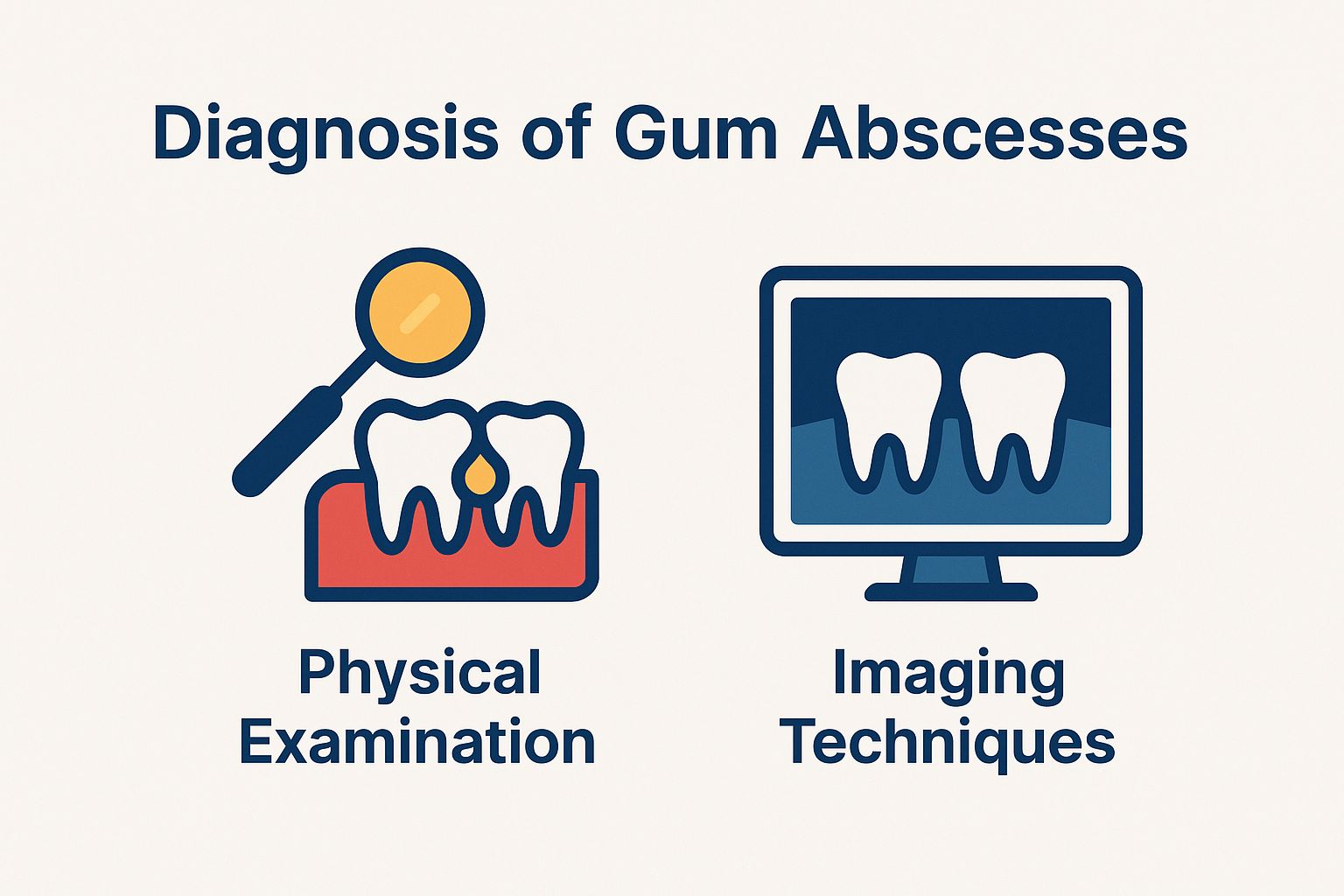
Physical Examination
During the exam, dentists thoroughly check your gum health through visual inspection and manual evaluation.
In addition, dentists employ tools such as periodontal probes to measure pocket depths around the teeth, which aids in determining the severity of gum disease. X-rays may also be utilized to detect underlying bone loss or abscess formation that may not be visible during the visual examination.
If an abscess is confirmed, the dentist may recommend treatment options such as drainage, antibiotics, or a referral to a specialist.
It is essential to maintain proper documentation of these findings to facilitate ongoing monitoring and treatment planning.
Imaging Techniques
Imaging techniques, like dental X-rays, are crucial for diagnosing gum abscesses. They show the extent of the infection and any underlying issues.
Different imaging methods help improve diagnosis and treatment planning.
Using these imaging techniques, dentists can create a precise and effective treatment plan tailored to each patient’s needs.
Treatment Options for Gum Abscesses
To treat gum abscesses effectively, you usually need a combination of antibiotics and drainage procedures.
This approach aims to eliminate infection and facilitate the healing process.
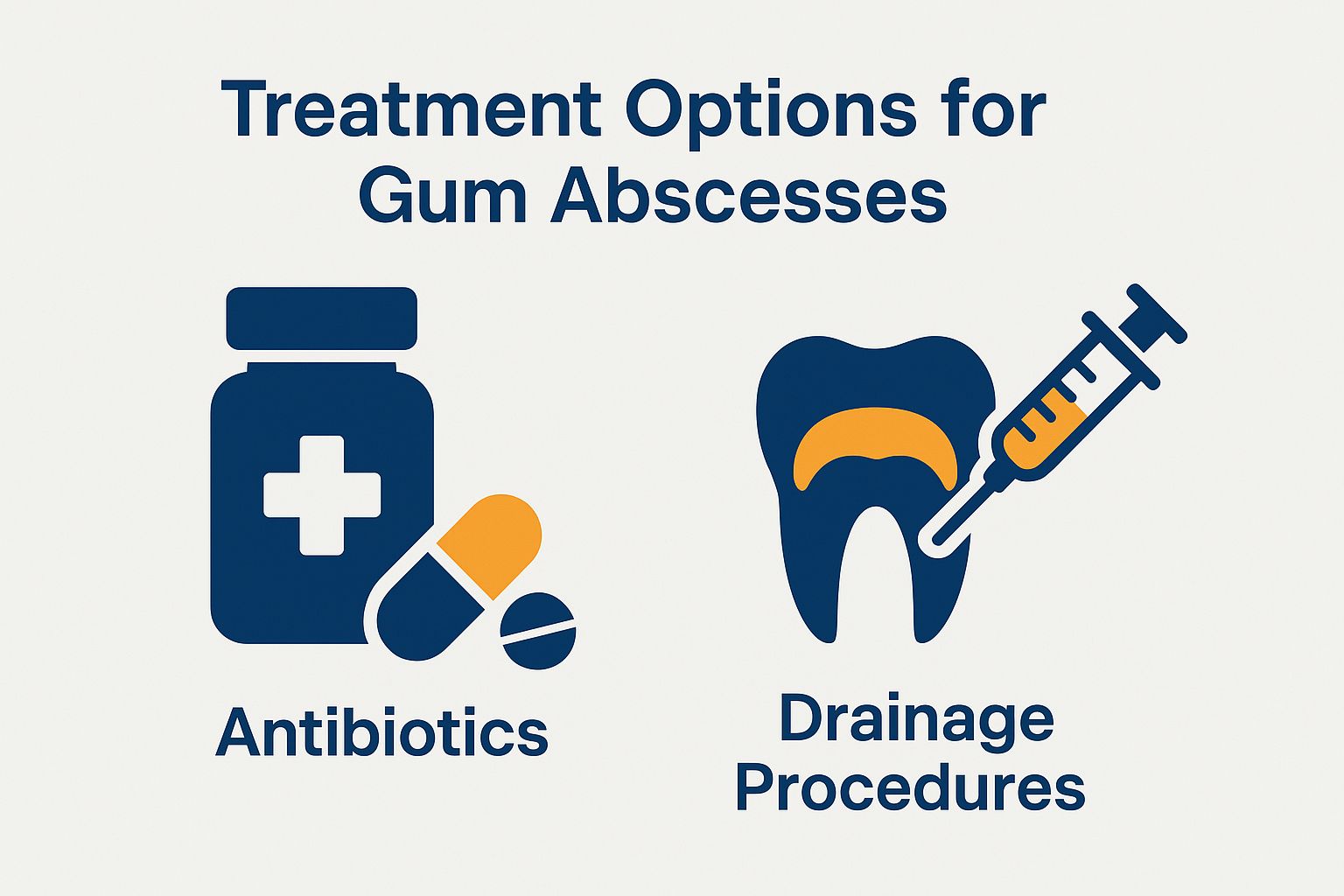
Antibiotics
Antibiotics, such as amoxicillin, are frequently prescribed to manage gum abscesses, helping with the control of infection and preventing its dissemination.
For optimal recovery, it is imperative to complete the entire prescribed course, which typically lasts between 7 to 10 days. The dosage may vary depending on the severity of the infection, often commencing at approximately 500 mg every 8 hours. Additionally, clindamycin serves as an alternative for individuals with penicillin allergies and is effective in comparable dosages.
Monitor for side effects like stomach issues. Contact your dentist if any symptoms continue.
Ultimately, adherence to the prescribed treatment plan significantly enhances healing and minimizes the risk of recurrence.
Drainage Procedures
Dental professionals perform drainage procedures to remove pus and relieve pressure from a gum abscess.
To effectively drain an abscess, dentists typically employ either a scalpel or a dental drill, based on the abscess’s location and severity. During the procedure, the dentist makes a small incision. This helps pus escape, reducing pain and swelling.
Following the drainage, the area is often rinsed with saline to eliminate any remaining bacteria. Patients may feel some discomfort during the procedure. However, pain usually goes away within a few hours.
Post-drainage care includes taking prescribed antibiotics, rinsing with saltwater, and avoiding hard foods for a few days. This promotes healing.
Effective Prevention Strategies
Effective prevention strategies can lower the risk of gum abscesses. This helps maintain long-term oral health.
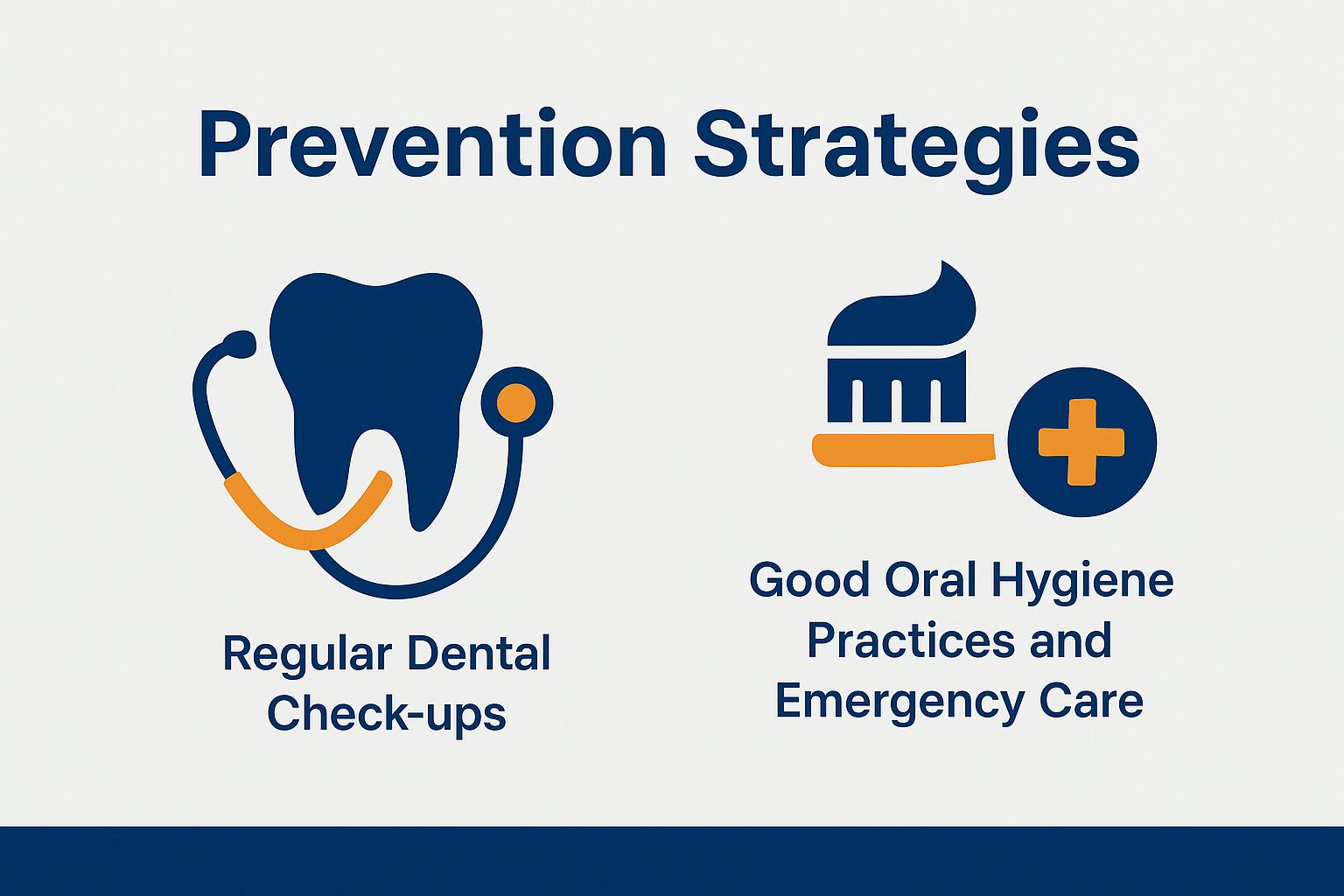
Regular Dental Check-ups
Regular dental check-ups, ideally conducted every six months, are essential for the early detection of dental issues, including gum abscesses, before they develop into more serious conditions. Using oral health tips from trusted sources like the Mayo Clinic and the American Dental Association is very helpful.
To maintain this schedule, it is advisable to set a recurring calendar reminder and select the same day every six months for consistency.
During these visits, patients can expect a comprehensive examination that includes X-rays and a professional cleaning as part of their dental treatment. The dentist may also provide guidance on areas that require improvement, such as brushing techniques or dietary recommendations.
Proactive dental care and timely dentist visits can prevent serious health issues. They also support overall well-being. For example, regular cleanings have been shown to reduce the risk of heart disease and diabetes, making each appointment an important investment in one’s health.
Good Oral Hygiene Practices and Emergency Care
Good oral hygiene practices are vital for preventing gum abscesses. Brush with fluoride toothpaste and floss daily. In cases of a periapical abscess, seeking a dentist’s help is crucial.
Along with these habits, using an electric toothbrush can be more effective than a manual brush at reducing plaque. It is advisable to select a model equipped with a timer to guarantee that the brushing duration reaches the recommended two minutes.
Incorporating an antibacterial mouthwash into one’s routine can further enhance oral hygiene by addressing areas that brushing and flossing may overlook, as recommended by the American Dental Association and the Mayo Clinic.
Scheduling regular dental check-ups twice a year is crucial for professional assessments and cleanings, as supported by studies from the Centers for Disease Control and Prevention. This practice helps detect issues early and maintains optimal oral health.

